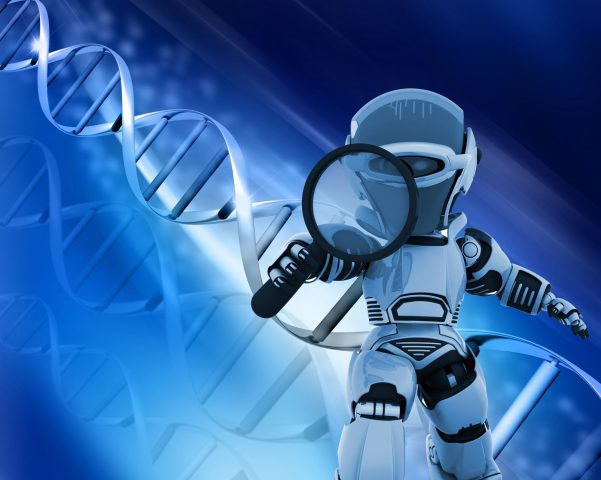Telemedicine market is booming and Big Data analytics is transforming Telemedicine in a big way. Let’s see how…
Recently, there has been a big explosion in the use of telemedicine, fuelled by the Coronavirus pandemic. More and more clinicians and patients are now adopting digital options for healthcare.
Thanks to telemedicine, it’s now common for doctors to even perform a surgery on patients distant from them, or a physiotherapist to monitor a post-surgical rehabilitation without even visiting the patient.
Do you think this trend is going to decline post Covid-19?
No. Rather, in the coming years, the global telemedicine market is expected to grow exponentially providing a great opportunity for investors. As per a recent report , the current market for telemedicine is around $31.8 billion, which is expected to reach $130.5 billion by 2025, as more doctors embrace this technology.

Telemedicine wouldn’t be possible without technology. Thankfully, medical world is always incorporating new technologies. One such technology that powers telemedicine is — Big Data Analytics. A blend of Big Data with telemedicine is doing wonders in the medical and healthcare world in numerous ways.
Take for example, health informatics. The convergence of the Internet of Things (IoT) and telemedicine has come up in the form of smart hospitals, smart operation theaters, smart healthcare monitoring, and much more. The enormous amount of data getting generated from these medical IoT devices has opened up a new paradigm called health informatics, which promises faster knowledge, analysis, and sharing of information. The backbone of this informatics is technologies like Big Data and Cloud Computing.
Let’s see some other areas where Big Data is advancing telemedicine and improving experience for both patients and health care providers:

Better Diagnosis
Numerous factors have to be considered before diagnostic medicines can be given to the patients. This requires careful analysis of the humongous amount of medical data. Any error in the analysis may have severe medical repercussions. Normally doctors rely on subjective reporting of symptoms by the patients before the doctor can carry out the diagnosis. But today, with so many wearable devices, doctors can diagnose the patient based on the health data collected by wearable devices.
Here Big Data analysis can help improve the diagnosis and its results. Medical practitioners can rely on Big Data analysis to draw information from huge amounts of medical data available. This is beyond the individual’s experience and available resources.
Post-treatment monitoring and medication
Once the treatment is over, the patient’s health can be monitored remotely with the help of telemedicine. This helps in avoiding patient’s follow up visits with doctors and is especially useful in elderly or weak patients as they no longer have to be physically present at the doctor’s place.
Big Data analytics techniques can be used to ascertain the right dose of medicines as well as the correct course of treatment for the remote patients. This is a win-win for both patients as well as doctors. Since monitoring and medication can be done remotely the cost of healthcare decreases considerably.
Electronic Health Records on the Cloud
The huge amount of health data generated can be stored as an Electronic Health Record or EHR of a patient. It can be stored on the cloud and if needed it can be made available to any healthcare practitioner across the world irrespective of his location. This is particularly helpful when the patient’s treatment needs to be done by a specialist doctor remotely.
This not only saves the time of doctor and patient but also saves the cost of patients traveling to the doctor’s place. Further, big data analytics can be applied to the data stored on the cloud for more insights.

Predictive Analytics
Predictive analytics can help medical practitioners’ take quick decisions based on data and improve the health of patients. It is particularly useful in the case of patients with complex medical conditions or chronic diseases. Clinicians can predict critical medical events in advance and avert deterioration of the patient’s condition.
A plethora of devices, the Internet of Medical Things (IoMT) are being used to constantly collect the health data of patients. Big Data Analytics is applied to this data to monitor the health statistics of the patient and practitioners are constantly updated about the status so that any abnormalities can be noticed well in advance.
All the data related to a patient’s history is used for predictive analytics to understand any impact on the future.
Early identification and prevention of Communicable Diseases
Analysis of healthcare data can be used to study the patterns of communicable diseases and predict future outburst in any particular region. Big data analytics can come handy here to study the trends and foresee the spread of the disease.
After the areas infected are identified, the treatment and monitoring can be started with the use of telemedicine.
The Future
The blend of Big Data analytics with Telemedicine provides data-driven insights to clinicians for better care of patients. It encourages value-based health care delivery coupled with reduced cost. Apart from the above benefits, the power of Big Data has opened up many other possibilities in the world of medicine which were earlier considered impossible. The recent telemedicine advancement is just the tip of the iceberg which holds a huge world of possibilities yet to be devised in the area of telemedicine as well as the supporting technologies.
The only hurdle that is impeding the widespread adoption of Big Data and Cloud Computing in the world of telemedicine is data privacy and security. If these concerns are taken care of, the power of big data can be harnessed to its true potential and we will see many more applications of big data analytics in telemedicine in the years to come!

